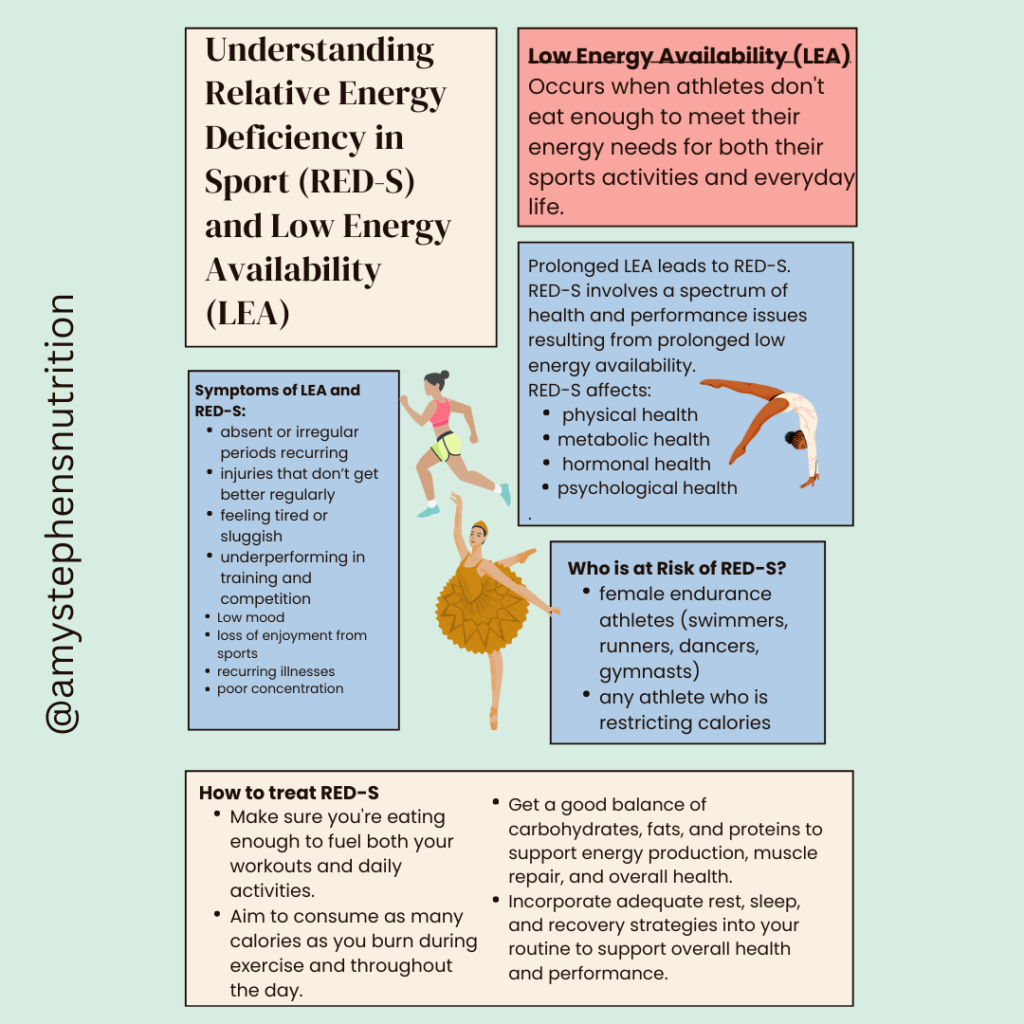Amy Stephens
MS, RDN, CSSD, CEDS
Licensed dietitian
specializing in sports nutrition
and eating disorders
MS, RDN, CSSD, CEDS
Licensed dietitian
specializing in sports nutrition
and eating disorders
By Kate Cochran, Nutrition Intern, NYU Track and Field
When I first learned about low energy availability (LEA) and relative energy deficiency in sport (RED-S) at twenty-one, I was four years deep into my distance running journey. It was while reading “How She Did It” by renowned female distance athletes Molly Huddle and Sara Slattery, both esteemed Olympians themselves, where I first learned about the syndrome. It was something I wish I knew when I began running at sixteen. I firmly believe it’s essential for every female athlete to familiarize themselves with RED-S early on, considering its potential impact on their athletic path.
LEA, or Low Energy Availability, is a condition where the body lacks sufficient energy to sustain vital physiological functions, jeopardizing overall health. It occurs when caloric intake fails to match the increased demands of intensified training, such as higher mileage or more strenuous workouts. Counting calories, restricting necessary food groups, waiting too long to eat after exercising, running on an empty stomach, and skipping meals can often result in LEA. When your energy availability is low, your performance in sport will likely suffer. In short, being in a constant state of low energy availability will prevent you from reaching your potential in sport.

Some symptoms of RED-S and LEA are:
Being in a prolonged state of low energy availability will eventually lead to RED-S. RED-S is a broader syndrome encompassing LEA as one of its components. RED-S involves a spectrum of health and performance issues resulting from prolonged low energy availability, affecting not only physical health but also metabolic, hormonal, and psychological aspects, ultimately impairing athletic performance. In addition to LEA, RED-S may involve disruptions in menstrual function, bone health, immunity, cardiovascular health, and psychological well-being.
Those at risk for RED-S are typically female endurance athletes, and anyone who is cutting calories while playing a high demand sport.
How to treat RED-S:
